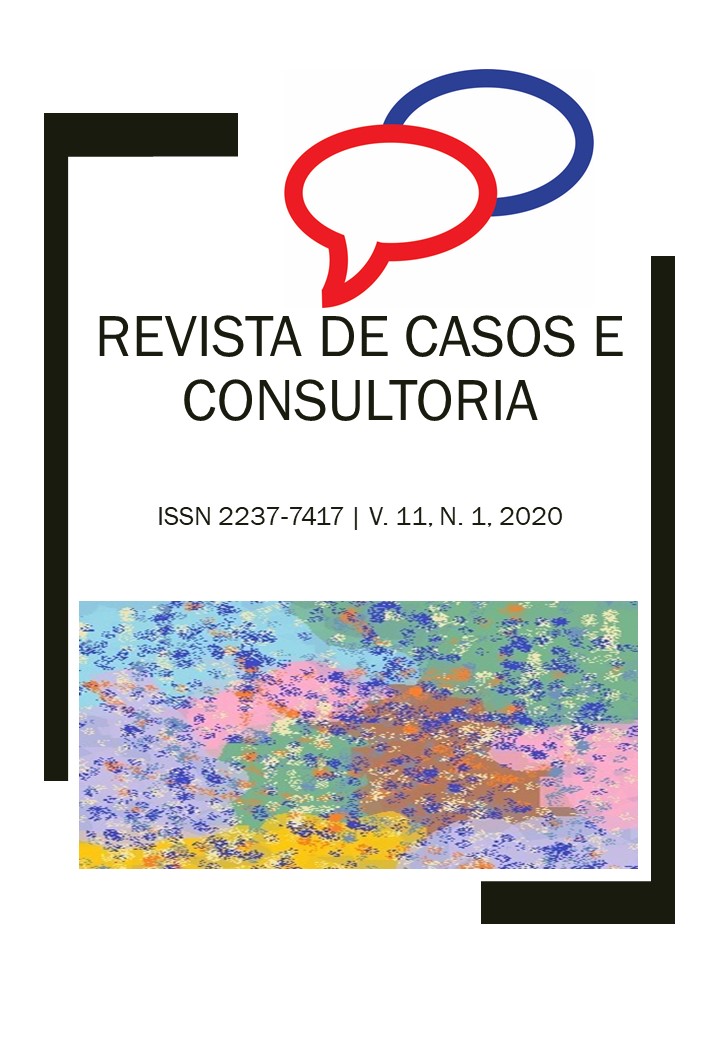The clothing industry in the context of international business
Keywords:
Globalization; Clothing Industry; Emerging Markets; Foreign Direct Investment; Sustainable Development Goals.Abstract
This essay proposes to explore the textile and clothing sector, grouped here in its entire production chain as “clothing sector”, and its global production chain. Characterized by fragmentation, the circuit production process allows production steps to be part of one another as input and output of supply and demand. This sector is relevant in Brazil, considered to be one of the largest clothing producers, occupying the sixth position in the international scenario. Intensive in labor and characterized by the lowest investments necessary to generate employment among the various industrial sectors. Consequently, a sector characterized by a fragile barrier to the entry of new players. For Mendes Júnior (2018) they are highly volatile products with great price elasticity and, consequently, large buyers and dominant retailers are playing cards in the production of clothes in a market that has great fragility at the end. In this critical essay, working conditions and the following hypotheses for the formation of in-depth research in the future are pointed out: (H1) The internationalization process of the fashion industry in emerging countries is focused on factors of production; (H2) The context of the fashion industry is broader, more diverse and segmented than we imagine, involving various sectors within the production chain and (H3) The fashion industry is undergoing changes in the way products are being produced.
Downloads
References
CAVUSGIL, S. Tamer; KNIGHT, Gary A.; RIESENBERGER, John R. Negócios internacionais: estratégia, gestão e novas realidades. São Paulo: Pearson, 2010. 546 p.
CONFEDERAÇÃO NACIONAL DA INDÚSTRIA; ASSOCIAÇÃO BRASILEIRA DA INDÚSTRIA TÊXTIL E DE CONFECÇÃO. O setor têxtil e de confecção e os desafios da sustentabilidade. Brasília: CNI, 2017. Disponível em: <https://bucket-gw-cni-static-cms-si.s3.amazonaws.com/media/filer_public/bb/6f/bb6fdd8d-8201-41ca-981d-deef4f58461f/abit.pdf>. Acesso em: 26 out. 2019.
COSTA, Lúcia de Fátima Lúcio Gomes da et al. Escolas teóricas do processo de internacionalização: uma visão epistemológica. Cadernos EBAPE.BR, Rio de Janeiro, p. 960-973, dez. 2017. Disponível em: <http://bibliotecadigital.fgv.br/ojs/index.php/cadernosebape/article/view/54072>. Acesso em: 26 ago. 2019.
DICKEN, Peter. Mudança global: mapeando as novas fronteiras da economia mundial. 5. ed. Porto Alegre: Bookman, 2010. 631 p.
MENDES JUNIOR, Biagio de Oliveira. Produção e desempenho da indústria do vestuário do Nordeste, Norte de Minas Gerais e Norte do Espírito Santo. Caderno Setorial ETENE, n. 46, out. 2018. Disponível em: <https://www.bnb.gov.br/documents/80223/4122020/46_vestuario.pdf/46e324fc-2c87-5c22-f134-8fa72f876a0e>. Acesso em: 26 out. 2019.
MINERVINI, Nicola. O exportador: ferramentas para atuar com sucesso no mercado internacional. 5. ed. São Paulo: Pearson Prentice Hall, 2008. Cap. 4, p. 71-90.
ORGANIZAÇÃO DAS NAÇÕES UNIDAS. Transformando Nosso Mundo: A Agenda 2030 para o Desenvolvimento Sustentável. 2015. Disponível em: <https://nacoesunidas.org/wp-content/uploads/2015/10/agenda2030-pt-br.pdf>. Acesso em: 31 out. 2019.
ROCHA, Angela da; SILVA, Jorge Ferreira da; CARNEIRO, Jorge. Expansão internacional das empresas brasileiras: revisão e síntese. In: FLEURY, Afonso Carlos Corrêa; FLEURY, Maria Tereza Leme (Org.). Internacionalização e os países emergentes. São Paulo: Atlas, 2007. Cap. 10, p. 183-196.
VASCONCELLOS, E. Internacionalização e o dilema da descentralização de P&D. In: FLEURY, Afonso Carlos Corrêa; FLEURY, Maria Tereza Leme (Org.). Internacionalização e os países emergentes. São Paulo: Atlas, 2007. Cap. 14, p. 253-266.
ZEFERINO, Marisa; BESSA JUNIOR, Alfredo de Almeida. Panorama do Mercado Mundial de Têxteis e de Vestuário. São Paulo: Instituto de Economia Agrícola, 2003. Disponível em: <http://www.iea.sp.gov.br/out/LerTexto.php?codTexto=687>. Acesso em: 27 nov. 2019.

 Português (Brasil)
Português (Brasil) English
English Español (España)
Español (España)